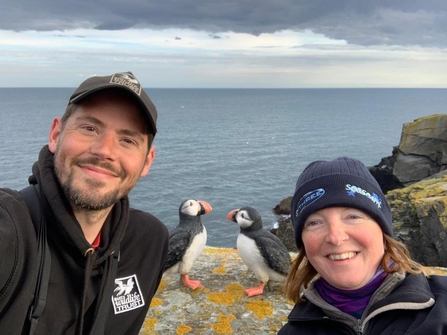
Lara and Rob setting up the puffin decoys
Week 2 began with the arrival of some familiar faces as more of our fantastic volunteers gave up their time and skills to help out with our long list of jobs. First to arrive was MWT Marine Officer, Lara Howe, along with boxes and boxes of decoy Puffins and speakers to put along the coastline. This project has been ongoing for 6 years at three sites along the East & West Coast. Puffins are one of a number of seabirds that were killed off by the accidentally introduced long tail population, but despite eradication of longtails they have not yet returned as they are incredibly site faithful. They breed in colonies and are proving very difficult to encourage back. Despite this, birds are spotted around the Calf from May-July and it is hoped that the Puffin calls and decoys will encourage more birds to come ashore.











